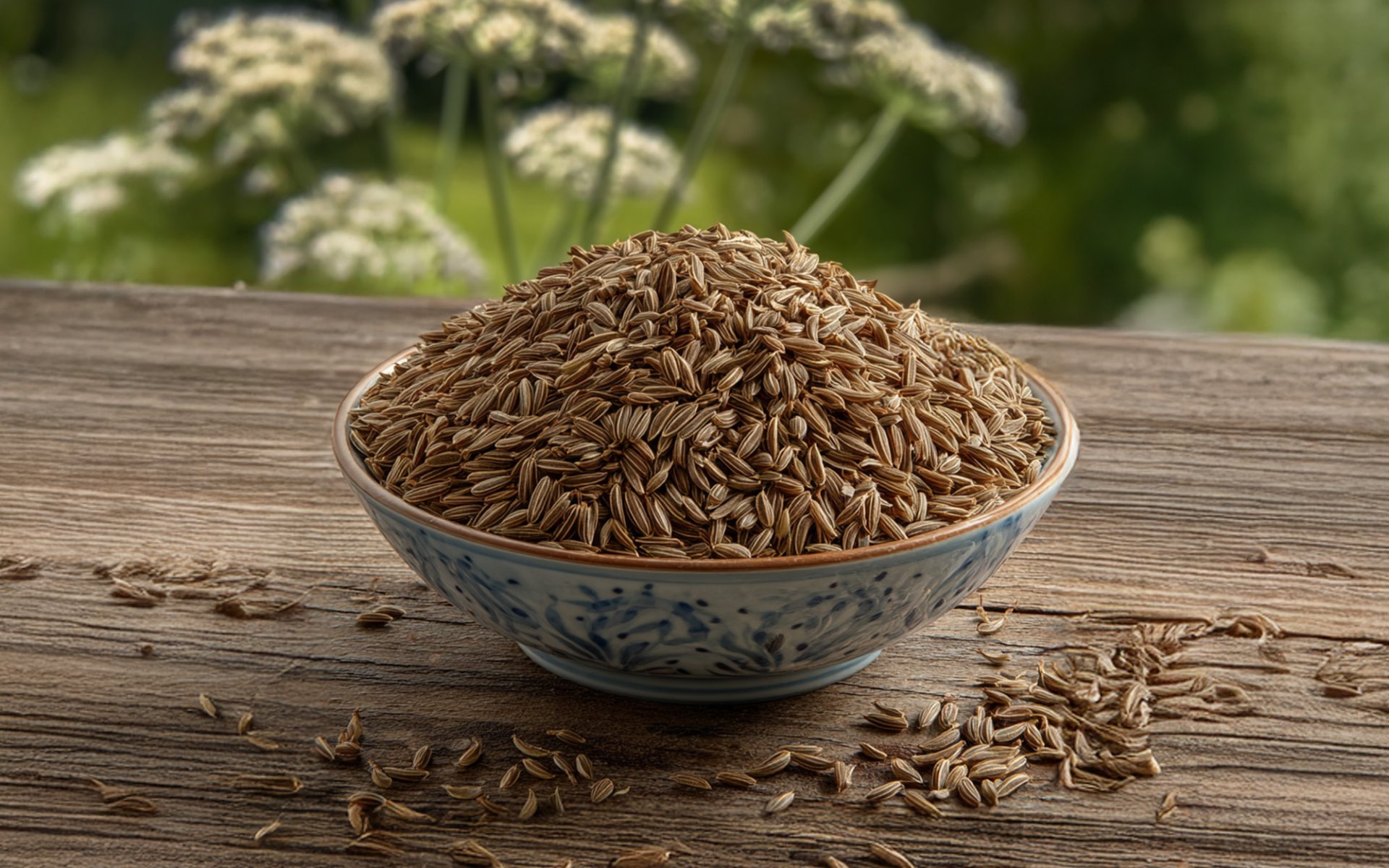Caraway Seed
Last updated: 30 Sept 2025

Caraway seed, scientifically known as Carum carvi, is a spice recognized by its small, crescent-shaped brown seeds. It carries an aroma reminiscent of anise and licorice, with a distinctive flavor that has made it a key ingredient in European cuisine. Caraway seeds are widely used in rye bread, as well as in flavoring stews, soups, and other traditional dishes.
Archaeological evidence suggests that caraway was cultivated in the Mediterranean region, covering present-day Turkey, Egypt, and Greece. Caraway seeds have been found in food remains dating back to around 3,500 BCE. Additionally, seeds were discovered in medieval lake dwellings in Switzerland, indicating its long history of use.
The ancient Egyptians believed caraway seeds possessed medicinal properties, often using them to treat bloating, indigestion, and other digestive issues. They also placed caraway seeds in burial rituals, believing the seeds would protect the soul in the afterlife.
The Greeks and Romans also valued caraway highly. Pedanius Dioscorides, a renowned Greek physician and botanist of the 1st century, mentioned caraway in his writings, prescribing it as a digestive aid and general tonic.
In Roman cuisine, caraway seeds appeared frequently, as documented in the famous ancient cookbook Apicius. Romans used them in meat dishes, bread, cheese, beverages, and even medicinal tonics.
Beyond its culinary and medicinal applications, caraway was also linked with folklore and superstition. It was believed to preserve fidelity between lovers, protect against theft when hidden in belongings, and prevent pigeons from straying when fed the seeds.
Some even believed chewing caraway seeds before a kiss would make someone fall in love with the chewer. This may have been connected to its traditional use as a breath freshener and digestive aid.
Over time, caraway cultivation spread worldwide. Today, the Netherlands remains the leading producer, but the spice is also grown in Finland, Germany, Poland, Eastern Europe, Canada, the United States, and North Africa.
You can find caraway seeds and caraway bread from the brand OVEN. at Rimping Supermarket.
Origins and Characteristics
Caraway is an herb belonging to the parsley family, native to Europe and Western Asia. The plant grows to about 2030 centimeters tall, with feather-like leaves. Its seeds are crescent-shaped, brown, and about 3 millimeters long.Archaeological evidence suggests that caraway was cultivated in the Mediterranean region, covering present-day Turkey, Egypt, and Greece. Caraway seeds have been found in food remains dating back to around 3,500 BCE. Additionally, seeds were discovered in medieval lake dwellings in Switzerland, indicating its long history of use.
Ancient Beliefs and Uses
The ancient Egyptians believed caraway seeds possessed medicinal properties, often using them to treat bloating, indigestion, and other digestive issues. They also placed caraway seeds in burial rituals, believing the seeds would protect the soul in the afterlife.
The Greeks and Romans also valued caraway highly. Pedanius Dioscorides, a renowned Greek physician and botanist of the 1st century, mentioned caraway in his writings, prescribing it as a digestive aid and general tonic.
In Roman cuisine, caraway seeds appeared frequently, as documented in the famous ancient cookbook Apicius. Romans used them in meat dishes, bread, cheese, beverages, and even medicinal tonics.
Caraway in the Middle Ages
During the Middle Ages, caraway was extensively cultivated across Central and Northern Europe, particularly in Germany, the Netherlands, Poland, and Scandinavia, where the climate was ideal for its growth.Beyond its culinary and medicinal applications, caraway was also linked with folklore and superstition. It was believed to preserve fidelity between lovers, protect against theft when hidden in belongings, and prevent pigeons from straying when fed the seeds.
Some even believed chewing caraway seeds before a kiss would make someone fall in love with the chewer. This may have been connected to its traditional use as a breath freshener and digestive aid.
Expansion to the New World
When Europeans began exploring and colonizing the New World, they brought caraway seeds with them. Immigrant communities incorporated caraway into their culinary traditions, especially in rye bread, pastries, and traditional European-style dishes.Over time, caraway cultivation spread worldwide. Today, the Netherlands remains the leading producer, but the spice is also grown in Finland, Germany, Poland, Eastern Europe, Canada, the United States, and North Africa.
Caraway in Modern Cuisine
Caraway continues to play an important role in many culinary traditions, particularly in Central Europe. In Germany, it is commonly used in bread, pie crusts, sauces, and the famous Sauerbraten dish. Austrians use it in stews, while Italians often boil hot chestnuts with caraway seeds before roasting.You can find caraway seeds and caraway bread from the brand OVEN. at Rimping Supermarket.
Tags :
Related Content
Getting to Know Pigs in Blankets One of the Most Popular Christmas Dishes in the United Kingdom
Tracing the History of Cranberry Sauce A Dish of Great Significance for Thanksgiving


